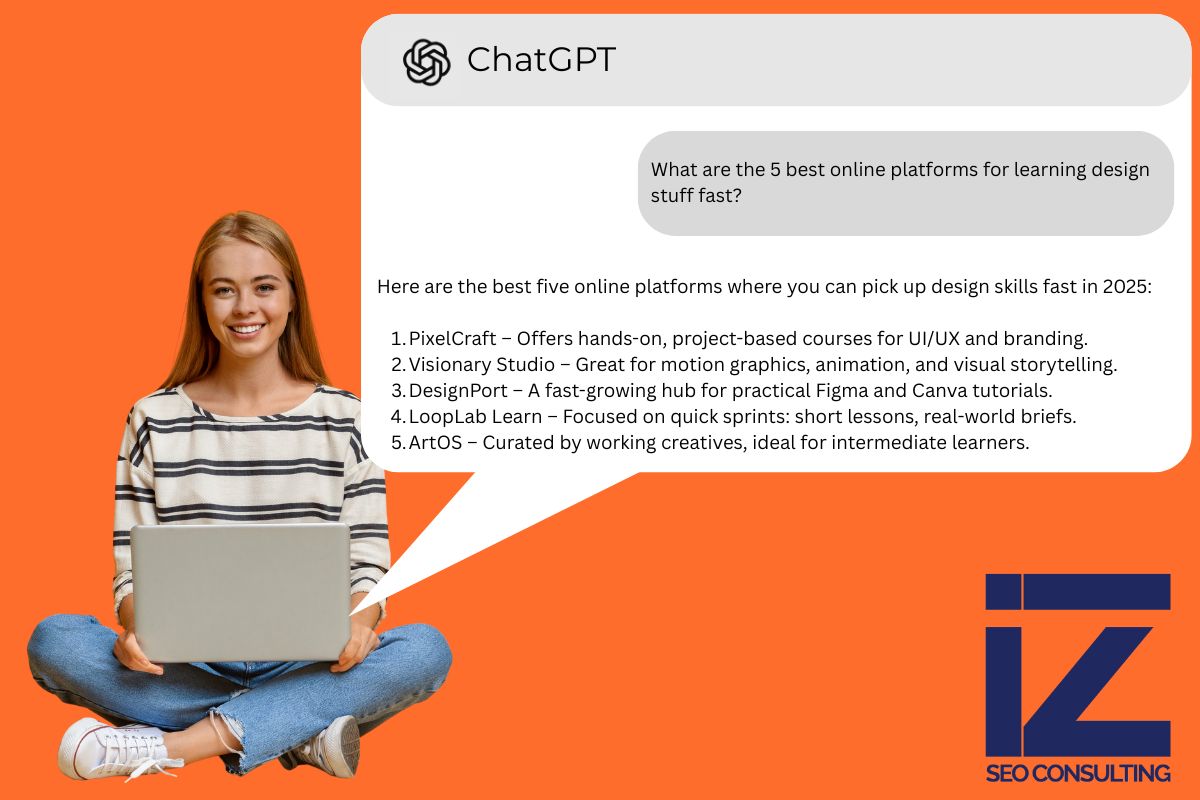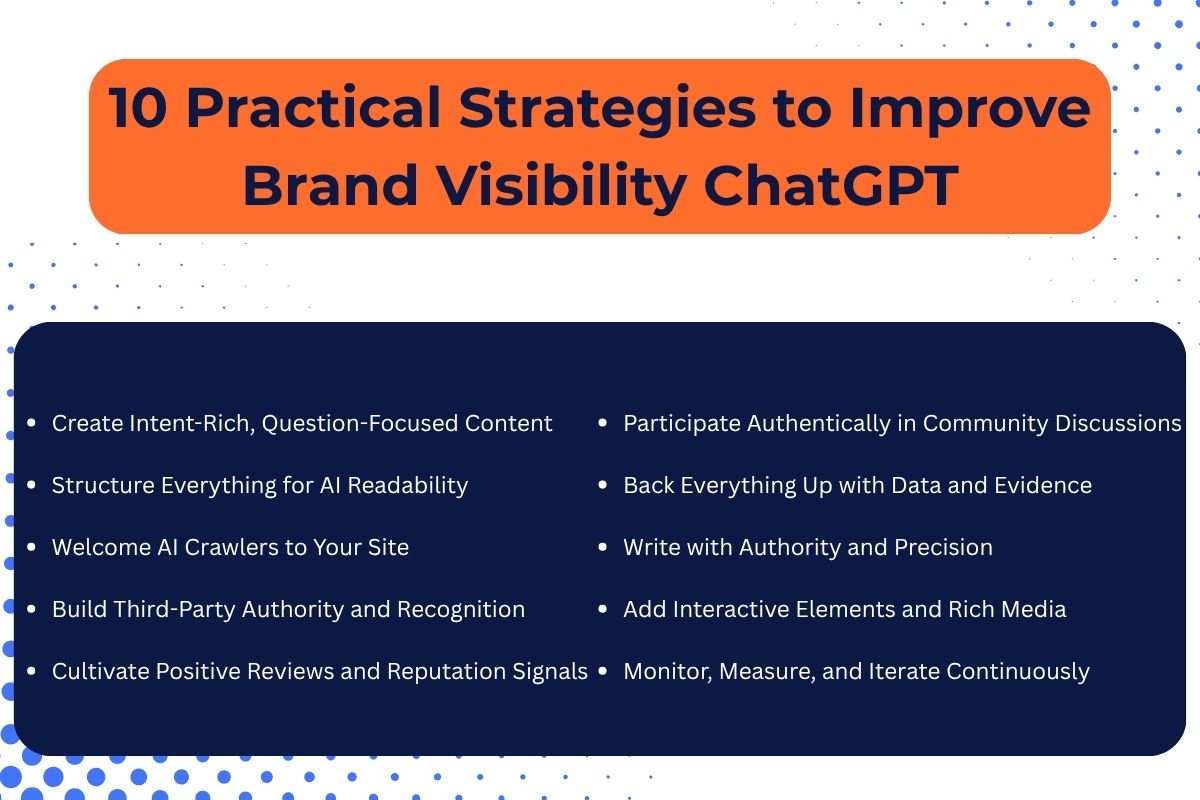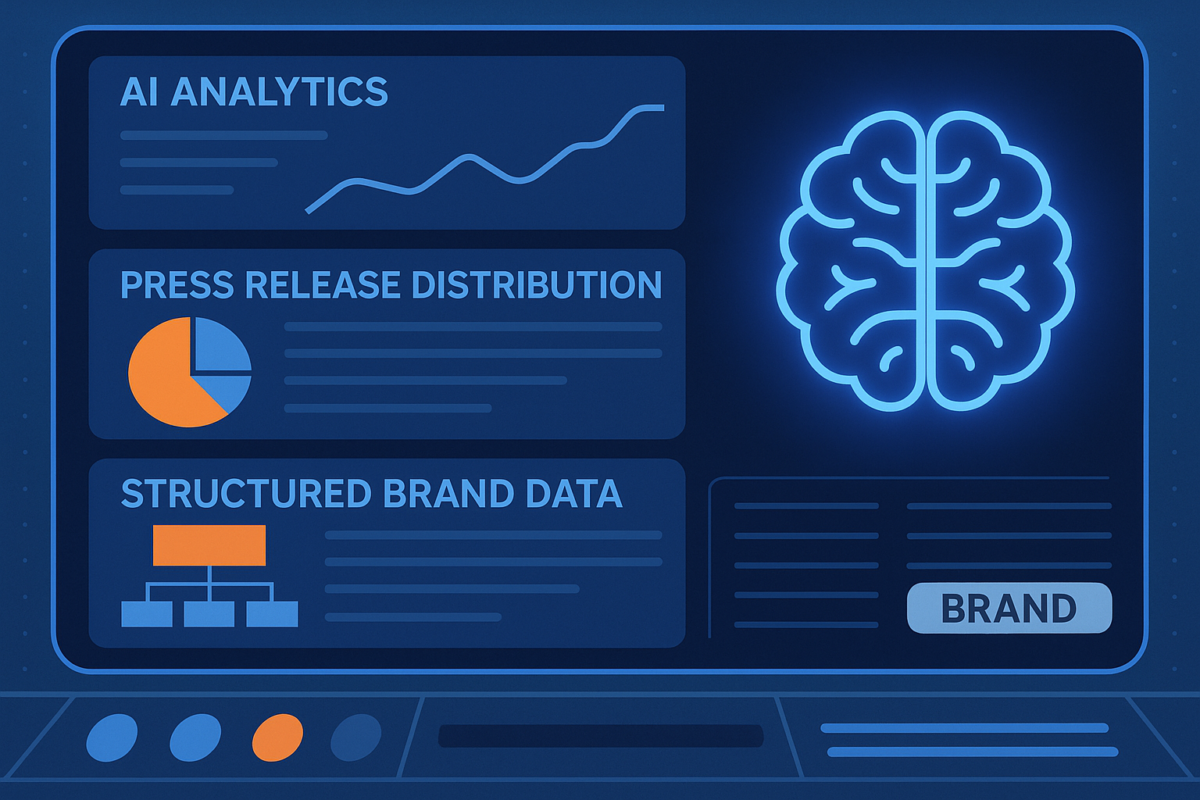The digital landscape is shifting beneath our feet. More people are asking ChatGPT for product recommendations, comparison shopping advice, and quick answers instead of scrolling through endless search results. For brands, this presents both a challenge and a golden opportunity.
The real question isn’t whether you should care about AI visibility—it’s how to improve brand visibility in ChatGPT responses before your competitors figure it out. The brands that crack this code early will build trust and recognition in ways traditional advertising simply can’t match.
This isn’t about gaming the system or finding quick hacks. It’s about creating content that AI models naturally want to reference and cite. When done right, this approach works alongside your existing SEO efforts, creating a compounding effect that strengthens your brand’s overall digital presence.
Let’s dive into the strategies that actually work, backed by real tactics that forward-thinking brands are already using to get noticed.
Why ChatGPT Visibility Actually Matters
Think about the last time you asked ChatGPT a question. You probably trusted the answer without second-guessing it, right? That’s the power of being included in AI responses—instant credibility and trust.

This shift hits especially hard with younger audiences. Gen Z and Millennials increasingly treat AI tools as their go-to research assistants. When ChatGPT recommends a product or mentions a brand positively, it carries weight that traditional ads struggle to achieve.
Here’s what makes this interesting: you don’t need a massive advertising budget to compete. Smart positioning and strategic content creation can help smaller brands earn their way into these conversations, sometimes outmaneuvering bigger competitors who haven’t adapted yet.
The secret sauce? Third-party recognition and authority building. Brands that get discovered using SEO also improve their chances of being cited by AI tools. It’s about showing up consistently across trusted sources and giving AI models clear, reliable information to work with.
Understanding AEO, GEO, and the Evolution of Search
To improve brand visibility, ChatGPT responses effectively, you need to understand how AI engines actually find and surface information. Two key approaches are reshaping how smart brands think about content: Answer Engine Optimization (AEO) and Generative Engine Optimization (GEO).
Answer Engine Optimization (AEO): Speaking AI’s Language
AEO is all about crafting content that directly answers specific questions. Instead of hoping people find your blog post, you’re creating content that AI tools naturally want to quote.
This means structuring information in Q&A formats, using clear schema markup, and aligning with Google’s EEAT principles (experience, expertise, authority, and trust). When someone asks ChatGPT about your industry, you want your content to be the obvious choice for citation.
Generative Engine Optimization (GEO): Building AI Recognition
GEO takes things further by optimizing your entire brand presence for AI recognition. This includes using structured metadata, maintaining clean site architecture, and implementing tools like llms.txt files that signal your openness to AI crawlers.
Think of GEO as creating recognizable patterns that AI models can learn and reference consistently. It’s about making your brand “AI-friendly” at a technical level.
How This Connects to Traditional SEO
Here’s the key insight: these approaches don’t replace traditional SEO—they amplify it. Keyword research, backlink building, and domain authority still matter enormously. But AEO and GEO add new layers specifically designed for AI visibility.
Working with experts like SEO, strengthening your brand can help you integrate these approaches seamlessly, ensuring your efforts compound rather than compete with each other.
10 Practical Strategies to Improve Brand Visibility ChatGPT
Ready for actionable tactics? Here are ten strategies that actually move the needle when it comes to how to improve brand visibility in ChatGPT responses:

1. Create Intent-Rich, Question-Focused Content
Write content that directly addresses what people are actually asking. Long-form posts work well, but so do comprehensive FAQ sections, detailed use-case studies, and clear “Too Long; Didn’t Read” summaries. The key is substance over fluff—AI models can spot thin content from miles away.
2. Structure Everything for AI Readability
Use clean H2/H3 headings, bullet points, and proper schema markup. AI models parse structured content much more effectively than walls of text. Think of your formatting as a roadmap that guides AI to the most important information.
3. Welcome AI Crawlers to Your Site
Include llms.txt files and ensure your robots.txt doesn’t accidentally block AI agents like OpenAI or Bing AI. These technical signals tell AI systems that your content is available for reference and citation.
4. Build Third-Party Authority and Recognition
Guest posting, industry blog features, and expert roundups aren’t just nice-to-haves anymore—they’re essential for AI visibility. When authoritative sites mention your brand, AI models take notice and start associating you with trust and expertise.
5. Cultivate Positive Reviews and Reputation Signals
Platforms like Google Reviews, Trustpilot, and industry-specific review sites feed crucial reputation data into AI systems. Verified positive feedback doesn’t just help customers—it helps AI models understand your brand’s credibility.
6. Participate Authentically in Community Discussions
Strategic participation on Reddit, Quora, and industry forums builds valuable social proof. When real users organically mention and recommend your brand in authentic discussions, AI tools pick up on these signals.
7. Back Everything Up with Data and Evidence
Include statistics, expert quotes, and verifiable information in your content. AI tools strongly prefer brands that present factual, well-sourced information over those making unsupported claims.
8. Write with Authority and Precision
Authoritative, clear writing stands out to AI models. Avoid vague language and filler content—models prioritize precision and expertise. Write like you’re educating both humans and algorithms simultaneously.
9. Add Interactive Elements and Rich Media
Diagrams, interactive tools, polls, and engaging visuals increase time on page and signal value to both humans and crawlers. These elements suggest that your content provides genuine utility.
10. Monitor, Measure, and Iterate Continuously
Use tools like Brand24 to track mentions, manually test ChatGPT outputs with relevant queries, and adjust your strategy based on what’s working. AI optimization is an ongoing process, not a one-time setup.
Putting It All Together: A Unified Framework
To truly improve brand visibility with ChatGPT, you can’t rely on just one tactic. Success comes from layering multiple strategies that reinforce each other. Here’s a streamlined six-step framework that combines the best of AEO, GEO, and traditional SEO:
- Step 1: Create comprehensive, question-focused content in clear Q&A formats
- Step 2: Structure everything with proper headings, bullets, and schema markup
- Step 3: Build authority through strategic third-party mentions and partnerships
- Step 4: Support all claims with data, quotes, and credible sources
- Step 5: Maintain an expert tone with clear, precise language throughout
- Step 6: Include engaging visuals and interactive elements where relevant
This framework addresses multiple angles simultaneously—content quality, technical optimization, authority building, and user engagement. When these elements work together, they significantly increase your chances of being referenced by AI systems.
The beauty of this approach is that Indexed Zone SEO techniques naturally complement AI optimization efforts, creating a compound effect that benefits both traditional search rankings and AI visibility.
Advanced Tactics for Competitive Advantage
Once you’ve nailed the fundamentals, these advanced strategies can give you an extra edge in AI-driven environments:
Strategic Press Release Distribution
Distribute newsworthy updates across trusted platforms and wire services. Well-syndicated content builds valuable backlinks and raises your brand’s profile in places where AI models gather information.
Monitor Generative Engine Trends
Tools like Asva AI, Siftly, and getfoundonai help track where and how brands appear in AI-generated answers. Use these insights to stay ahead of shifts in AI behavior and adjust your strategy accordingly.
Develop AI-Ready Knowledge Graphs
Create structured data about your brand, product specifications, team bios, company milestones, and organizational charts. This structured information makes it easier for AI systems to understand and accurately reference your content.

These advanced tactics work best when built on a solid foundation of quality content and technical optimization. They’re the difference between occasional mentions and consistent, authoritative citations.
Timeline and Measuring Success
Here’s the reality check: improving visibility in ChatGPT answers isn’t instant like running a paid ad campaign. Most brands start seeing meaningful traction between 6 and 9 months, depending on their existing content footprint and domain authority.
The process builds gradually but measurably. Track these key indicators to monitor your progress:
- Direct AI mentions: How often does ChatGPT cite your brand for relevant queries?
- Branded search growth: Are more people searching for your brand specifically?
- Content engagement metrics: Improved dwell time on your AI-optimized pages
- Referral traffic patterns: Increases in traffic from AI-based referrals (where trackable)
- Manual testing: Regular spot checks using relevant prompts in ChatGPT
Tools like Brand24 provide real-time monitoring of online mentions and visibility trends. The key is consistency—brands that persistently apply these strategies build sustainable competitive advantages that are difficult for competitors to replicate quickly.
Common Questions About ChatGPT Brand Visibility
How is optimizing for ChatGPT different from regular SEO?
Traditional SEO focuses on search rankings and click-through rates. ChatGPT optimization is about structuring content so that AI naturally understands and cites it. This includes using schema markup, building cross-site authority, and appearing consistently on trusted third-party platforms.
How long before I see results in ChatGPT responses?
If you’re starting from scratch, expect 6–9 months to see meaningful movement. Brands with existing authority and quality content may see citations sooner. The key is maintaining consistency across all your optimization efforts.
Can I submit my site directly to ChatGPT for inclusion?
No direct submission process exists. Instead, you improve brand visibility ChatGPT by ensuring OpenAI and Bing AI can crawl your site through proper robots.txt configuration and implementing llms.txt files.
Do paid advertisements influence ChatGPT’s visibility?
No. ChatGPT doesn’t factor in paid advertising when generating responses. Organic presence, content quality, and earned authority matter most for AI citations.
What types of content does ChatGPT prefer to cite?
Content that’s factual, well-structured, and from trusted sources. Think comprehensive Q&A sections, expert insights backed by data, and brands that appear frequently on reputable industry websites.
How can I check if ChatGPT mentions my brand?
Use manual testing with prompts like “What is [Your Brand]?” or “Best [your industry] companies.” Tools like Brand24 can also monitor citations and mentions over time.
Your Action Plan for AI Visibility
ChatGPT visibility isn’t just a nice bonus anymore—it’s becoming essential for how people discover and evaluate brands. As AI tools continue shaping information delivery, the ability to improve brand visibility in ChatGPT responses provides a significant competitive advantage.
Here’s what actually works:
- Create substantial, question-driven content that serves real user needs
- Structure everything for both human readers and AI parsing
- Build genuine third-party authority through strategic partnerships and mentions
- Encourage authentic reviews and community engagement
- Include solid evidence and maintain an expert tone throughout
- Track your progress and refine your approach based on real data
Ready to Get Started?
Your roadmap is straightforward:
- Audit your current content for clarity, structure, and AI-friendliness
- Implement technical optimizations like schema markup and AI crawler access
- Develop comprehensive FAQ sections and question-focused content
- Build credibility through strategic mentions and review management
- Monitor and refine using both tools and manual testing
By following this framework consistently, you’ll improve brand visibility ChatGPT and position your brand for the next wave of digital discovery. The brands that start now will have a substantial head start over those who wait to see how this trend develops.
The future of brand discovery is already here—and it’s powered by AI conversations that happen millions of times every day.



